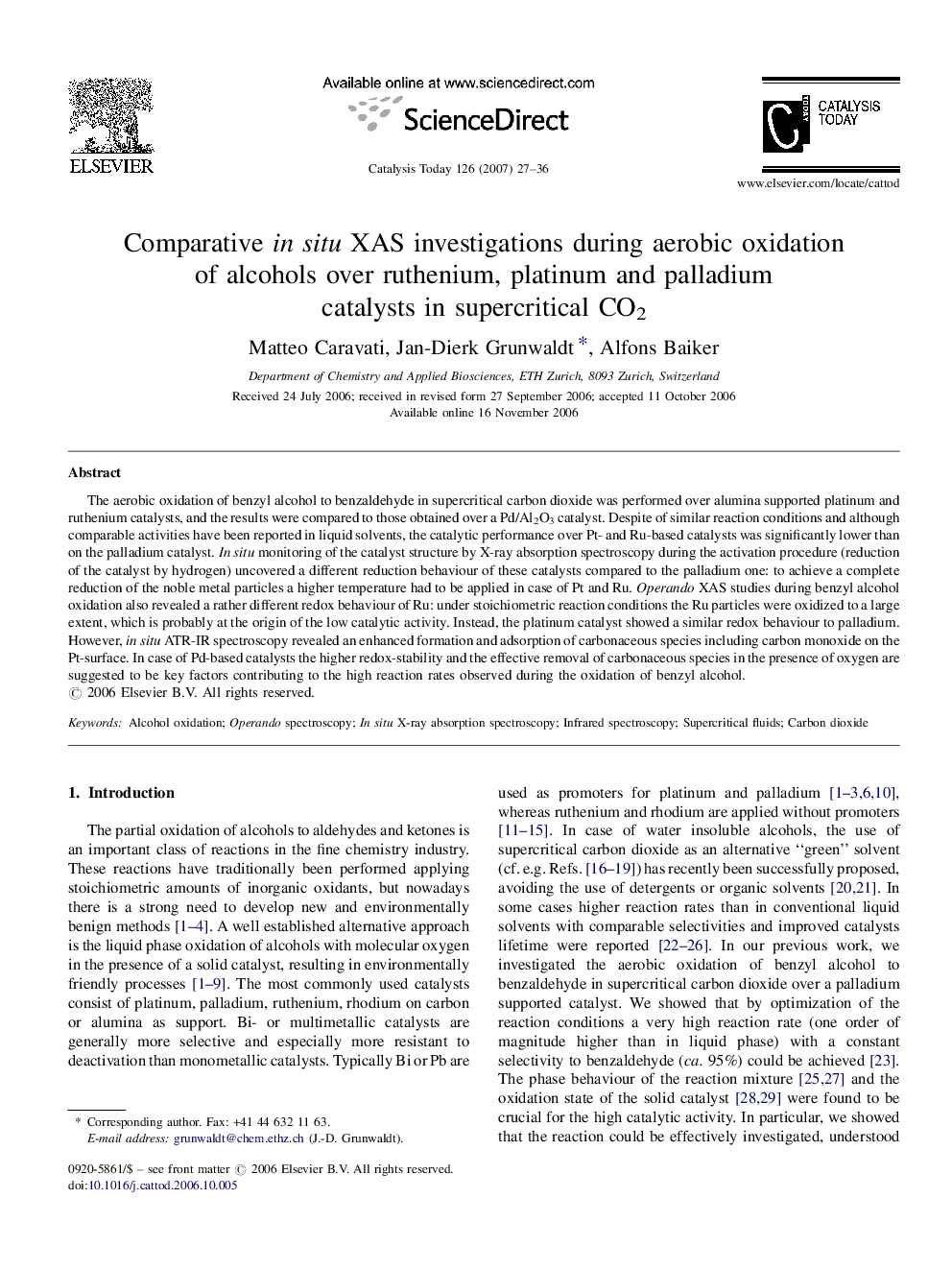| Article ID | Journal | Published Year | Pages | File Type |
|---|---|---|---|---|
| 57954 | Catalysis Today | 2007 | 10 Pages |
The aerobic oxidation of benzyl alcohol to benzaldehyde in supercritical carbon dioxide was performed over alumina supported platinum and ruthenium catalysts, and the results were compared to those obtained over a Pd/Al2O3 catalyst. Despite of similar reaction conditions and although comparable activities have been reported in liquid solvents, the catalytic performance over Pt- and Ru-based catalysts was significantly lower than on the palladium catalyst. In situ monitoring of the catalyst structure by X-ray absorption spectroscopy during the activation procedure (reduction of the catalyst by hydrogen) uncovered a different reduction behaviour of these catalysts compared to the palladium one: to achieve a complete reduction of the noble metal particles a higher temperature had to be applied in case of Pt and Ru. Operando XAS studies during benzyl alcohol oxidation also revealed a rather different redox behaviour of Ru: under stoichiometric reaction conditions the Ru particles were oxidized to a large extent, which is probably at the origin of the low catalytic activity. Instead, the platinum catalyst showed a similar redox behaviour to palladium. However, in situ ATR-IR spectroscopy revealed an enhanced formation and adsorption of carbonaceous species including carbon monoxide on the Pt-surface. In case of Pd-based catalysts the higher redox-stability and the effective removal of carbonaceous species in the presence of oxygen are suggested to be key factors contributing to the high reaction rates observed during the oxidation of benzyl alcohol.
